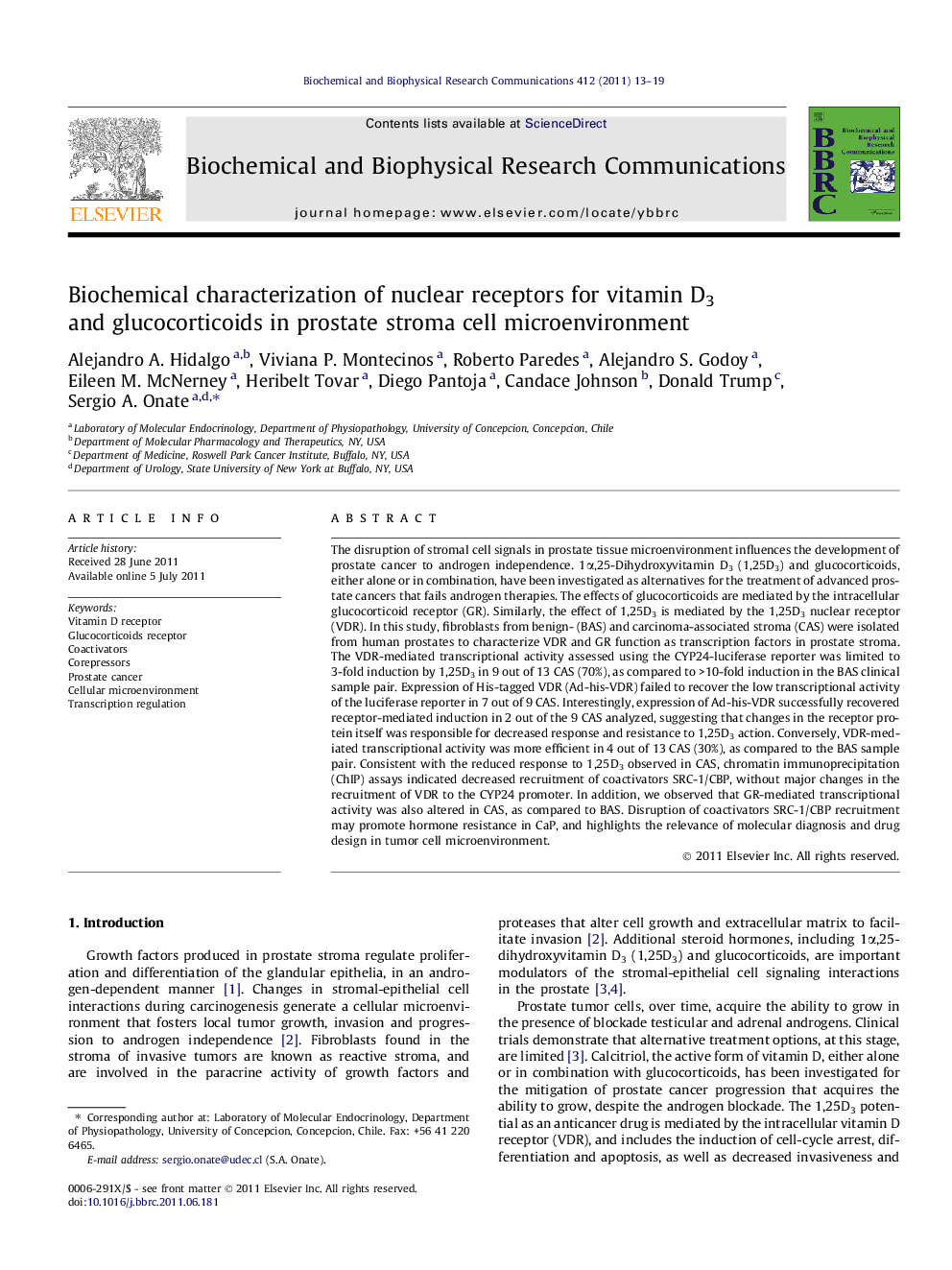| کد مقاله | کد نشریه | سال انتشار | مقاله انگلیسی | نسخه تمام متن |
|---|---|---|---|---|
| 1930288 | 1050501 | 2011 | 7 صفحه PDF | دانلود رایگان |

The disruption of stromal cell signals in prostate tissue microenvironment influences the development of prostate cancer to androgen independence. 1α,25-Dihydroxyvitamin D3 (1,25D3) and glucocorticoids, either alone or in combination, have been investigated as alternatives for the treatment of advanced prostate cancers that fails androgen therapies. The effects of glucocorticoids are mediated by the intracellular glucocorticoid receptor (GR). Similarly, the effect of 1,25D3 is mediated by the 1,25D3 nuclear receptor (VDR). In this study, fibroblasts from benign- (BAS) and carcinoma-associated stroma (CAS) were isolated from human prostates to characterize VDR and GR function as transcription factors in prostate stroma. The VDR-mediated transcriptional activity assessed using the CYP24-luciferase reporter was limited to 3-fold induction by 1,25D3 in 9 out of 13 CAS (70%), as compared to >10-fold induction in the BAS clinical sample pair. Expression of His-tagged VDR (Ad-his-VDR) failed to recover the low transcriptional activity of the luciferase reporter in 7 out of 9 CAS. Interestingly, expression of Ad-his-VDR successfully recovered receptor-mediated induction in 2 out of the 9 CAS analyzed, suggesting that changes in the receptor protein itself was responsible for decreased response and resistance to 1,25D3 action. Conversely, VDR-mediated transcriptional activity was more efficient in 4 out of 13 CAS (30%), as compared to the BAS sample pair. Consistent with the reduced response to 1,25D3 observed in CAS, chromatin immunoprecipitation (ChIP) assays indicated decreased recruitment of coactivators SRC-1/CBP, without major changes in the recruitment of VDR to the CYP24 promoter. In addition, we observed that GR-mediated transcriptional activity was also altered in CAS, as compared to BAS. Disruption of coactivators SRC-1/CBP recruitment may promote hormone resistance in CaP, and highlights the relevance of molecular diagnosis and drug design in tumor cell microenvironment.
► Fibroblasts from benign and carcinoma-associated stroma were biochemically characterized for VDR and GR function as transcription factors in prostate stroma cell microenvironment.
► Decreased SRC-1/CBP coactivators recruitment to VDR and GR may result in hormone resistance to 1,25D3 in stromal cell microenvironment prostate cancer.
► 1a,25-Dyhidroxyvitamin D3 (1,25D3) and glucocorticoids, either alone or in combination, may not be an alternative for ‘some’ advanced prostate cancers that fails androgen therapies.
Journal: Biochemical and Biophysical Research Communications - Volume 412, Issue 1, 19 August 2011, Pages 13–19